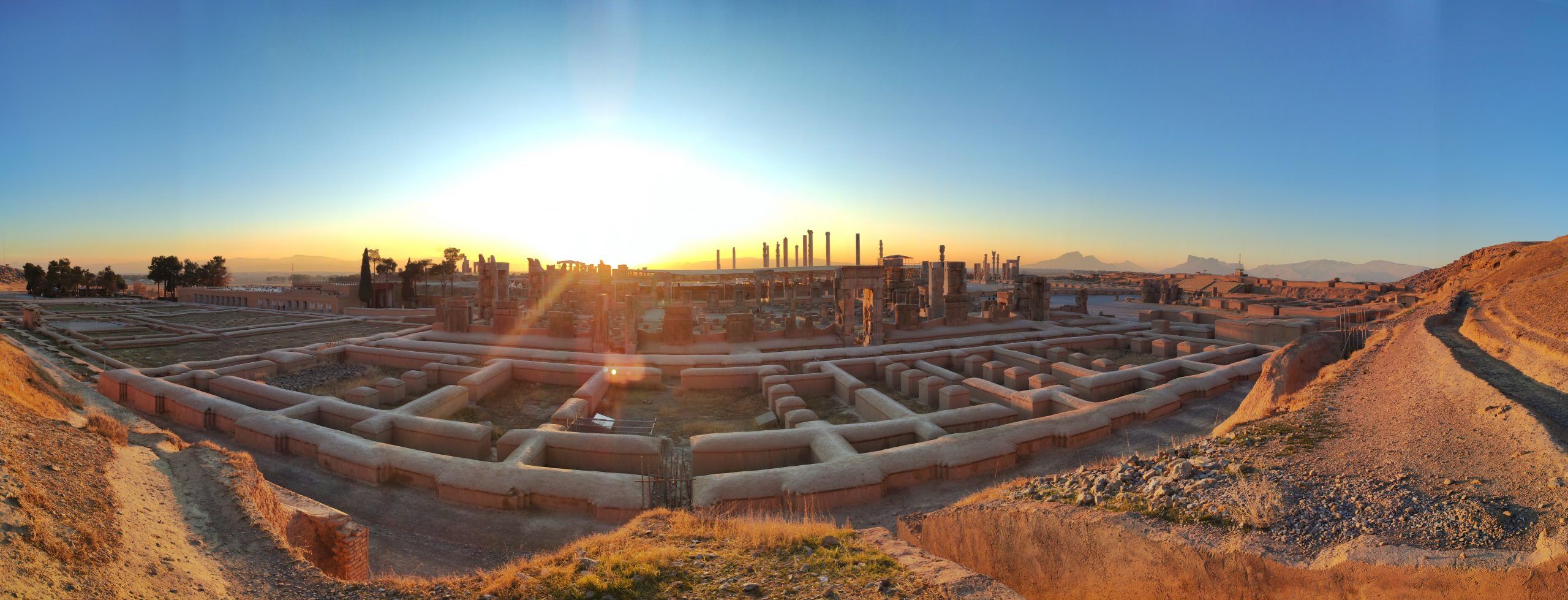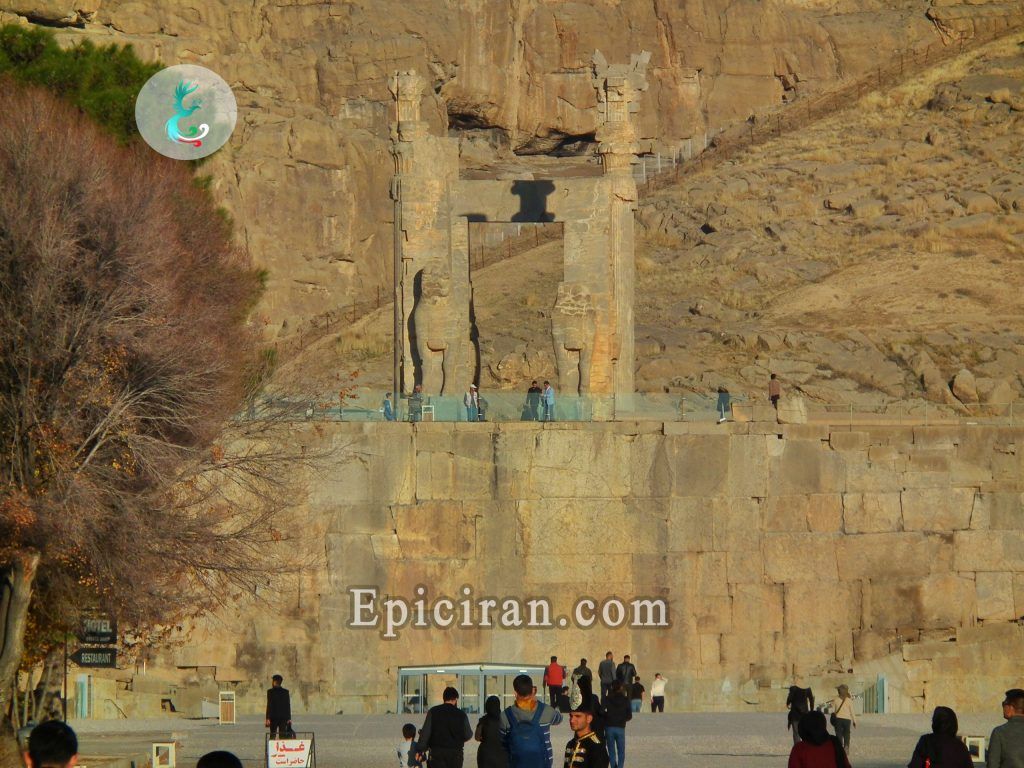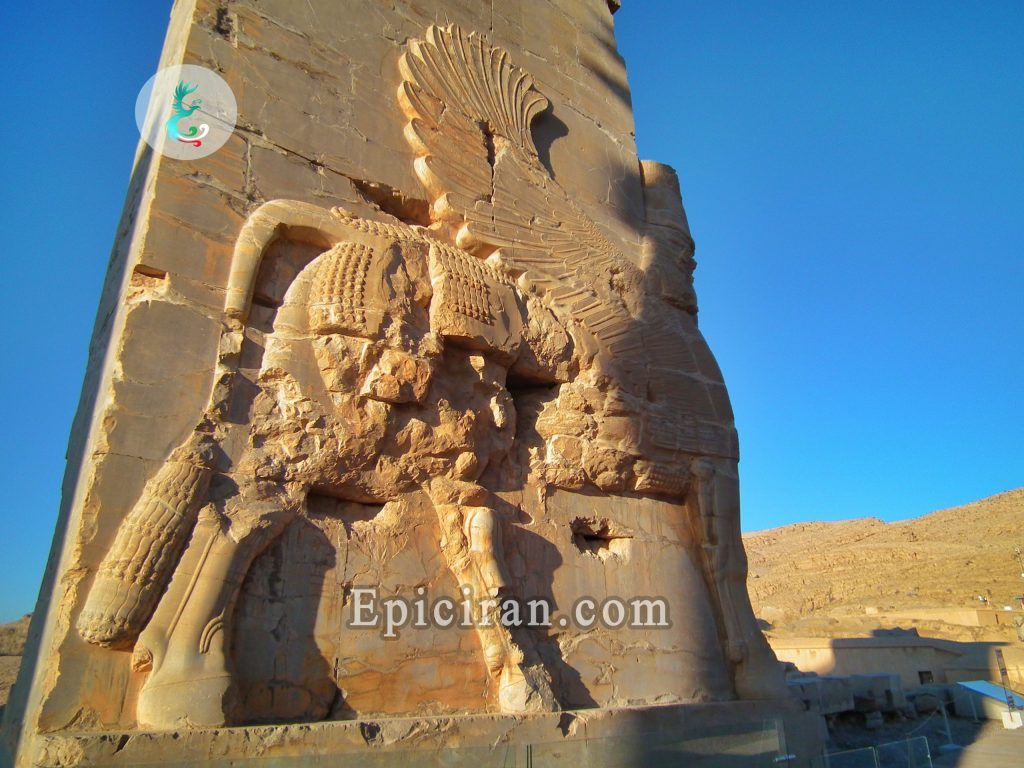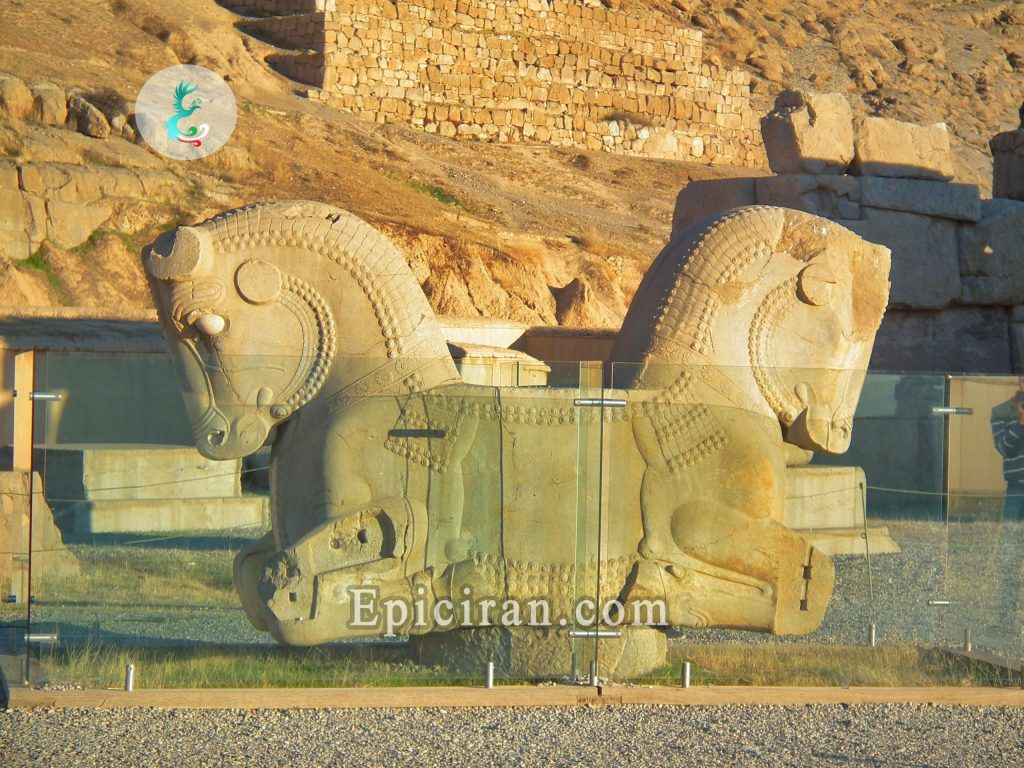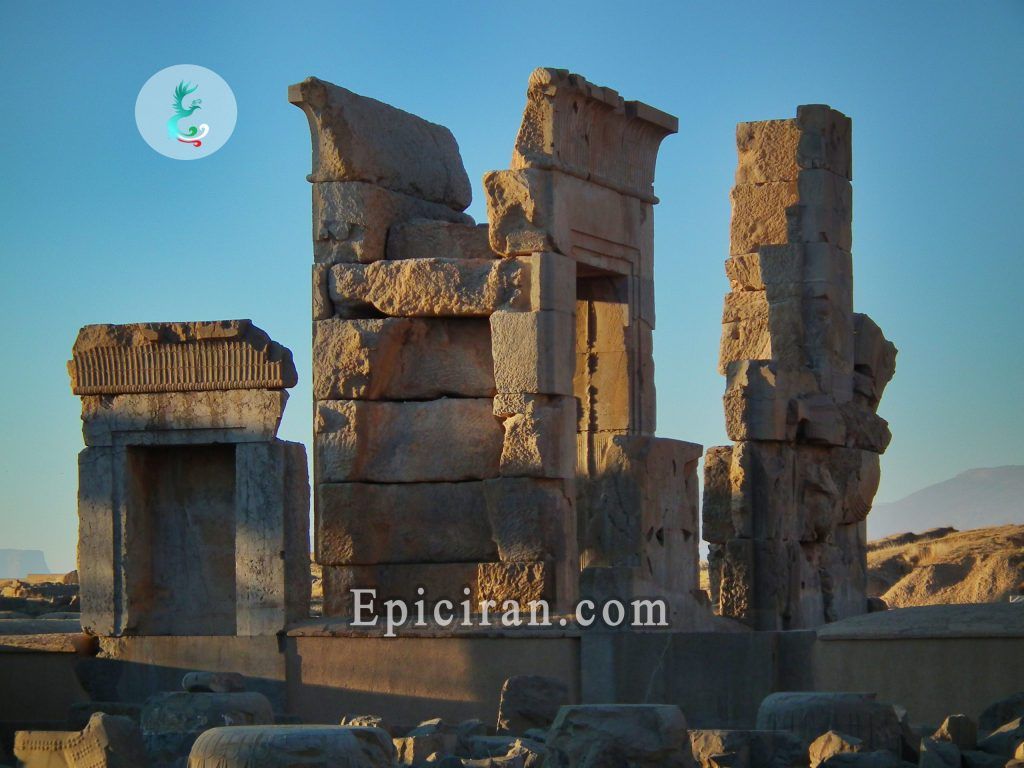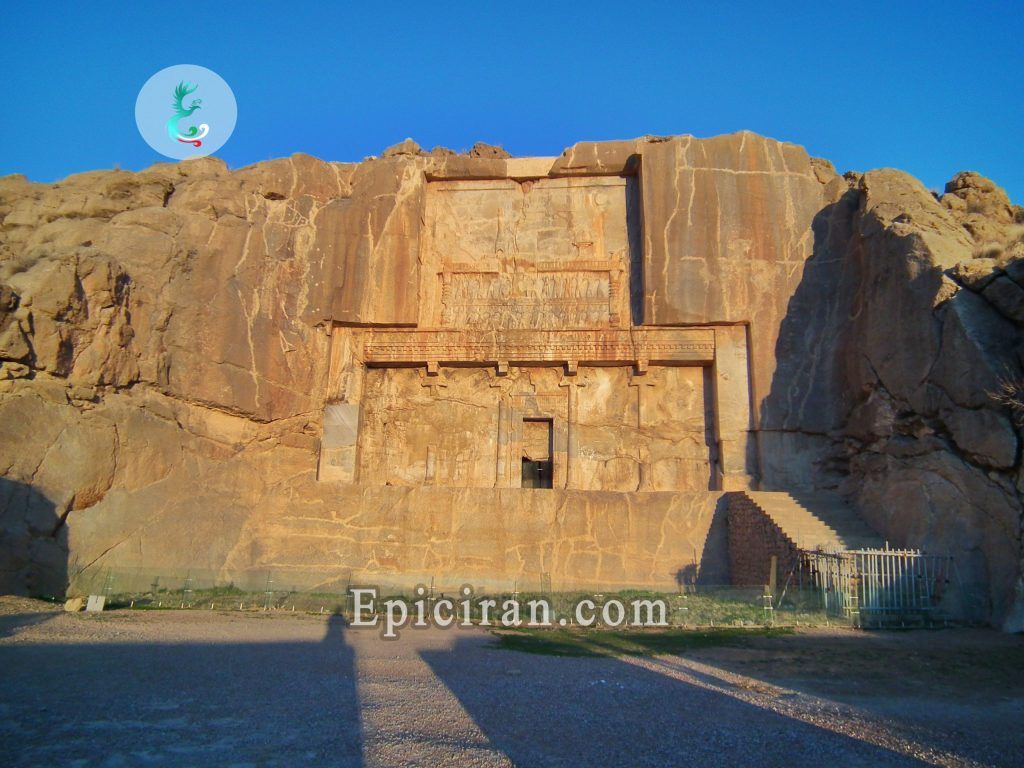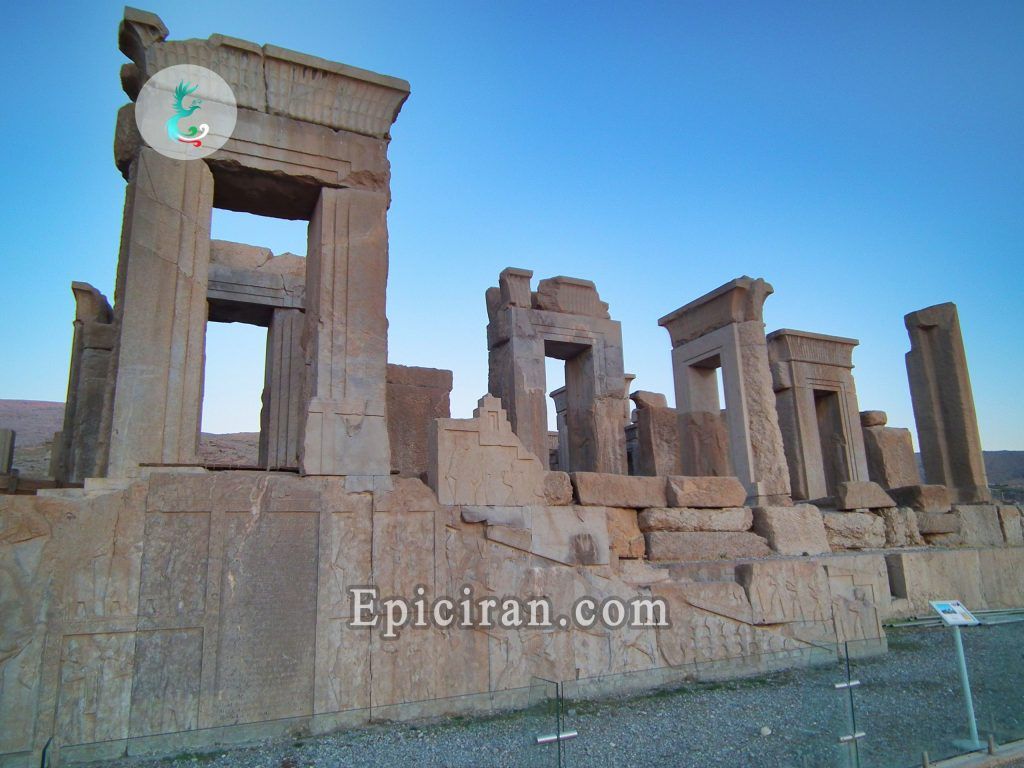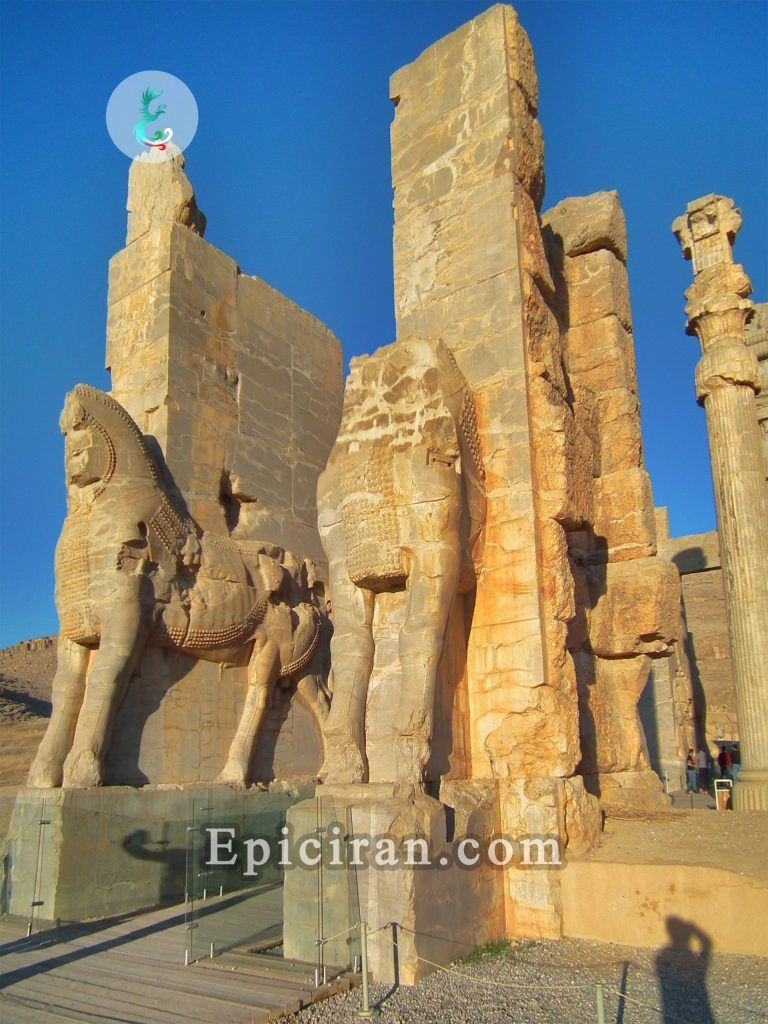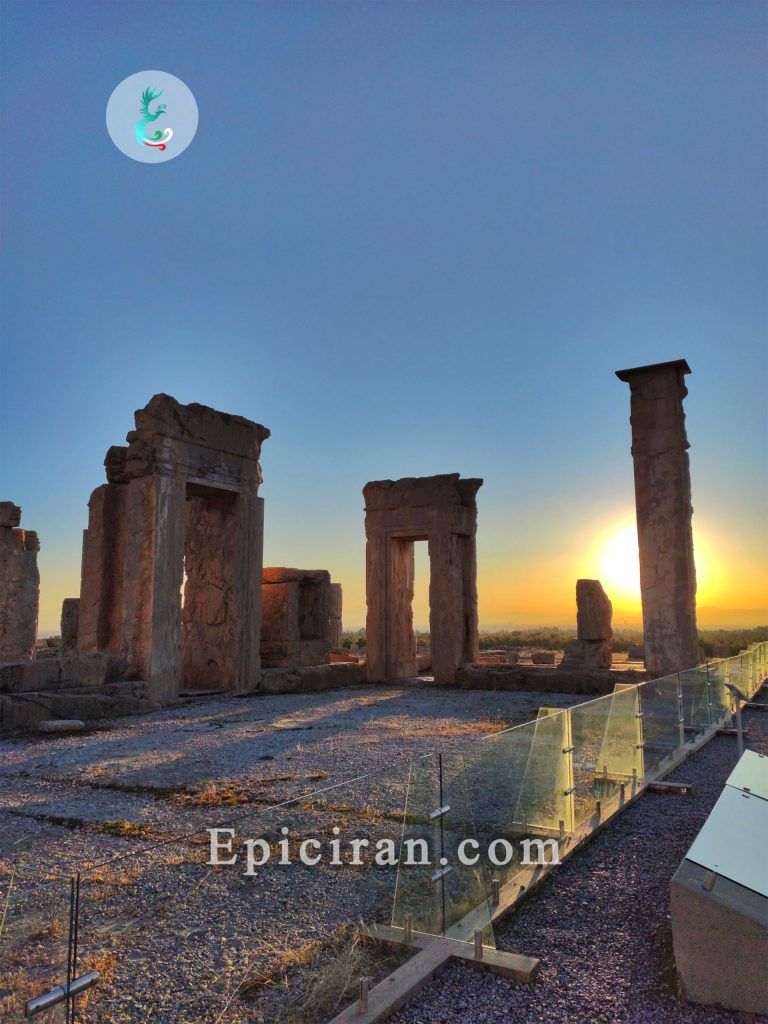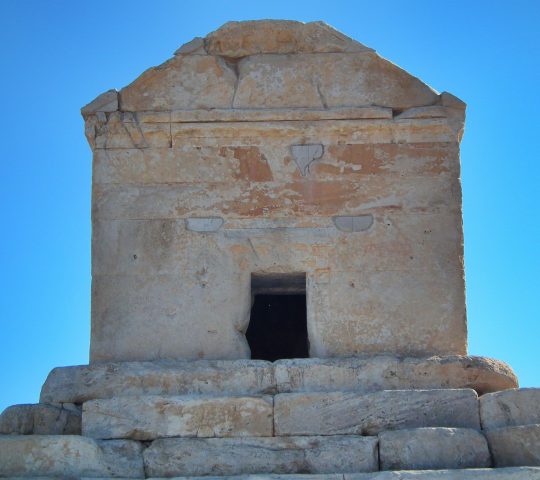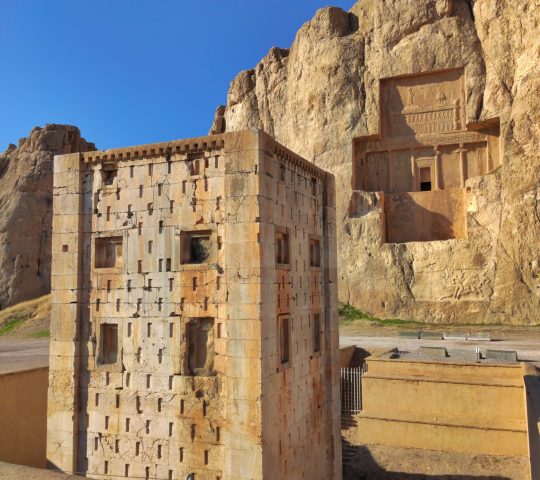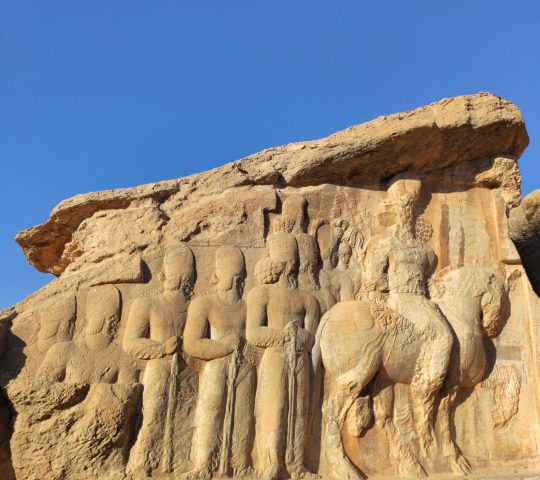After the departure of Cyrus the Great and his son Cambodia, Darius the Great(founder of Persepolis), who was one of the commanders and a member of the royal household of the Achaemenid, succeeded the throne by suppressing the rebellions and other claims to the throne. The reign of Darius the Great can be considered the golden period of the Achaemenid dynasty because in this era, the Achaemenid-dominated lands vastest possible state.
The two historical sets of Pasargadae and Persepolis are two extremely important monuments in Iran, Pasargadae being constructed by Cyrus the Great, and Persepolis by Darius the Great. If we want to peruse Persepolis geographically, we can observe that this monument is built in the vicinity of an overflowing river, called Cyrus, which is nowadays known as Kor. This area is in fact a combination of plains and rather high mountains, with a mild climate, causing it to be a fertile area for residence. From an etymological viewpoint, it was first called Parseh (Parsian City), Sad Sotun in the Sassanian era, and Takht-e-Jamshid after the Islamic conquest.
Since Darius built this structure up to two hundred years later, Persepolis was the center of power and extremely cultivated and populous. After Darius, his son, Xerxes I, came to the throne. (After Cyrus’ departure, Darius married his daughter, and the offspring of this marriage was Xerxes, who became the conqueror of Athens later.) Xerxes I and the upcoming kings each added a construction to the monuments of this set, which we will explain below.
One of the oldest palaces of Persepolis is Apadana Palace, which belongs to the first period of the construction of this set and Darius the Great. Apadana Palace has had three verandas and thirty-six pillars and has been used for celebrations, such as Nowrouz, and the residence of guests. There are numerous sculptors on the walls of Apadana Palace, of which the most remarkable could be the offering of presents to the king and the Medes soldiers accompanied by Persian soldiers.
Hadish Palace
Hadish Palace, which is the private palace of Xerxes I and is constructed by him, has an area of more than two thousand and five hundred square meters. Xerxes I’s sculptor in the northern part of the palace is among the remarkable features of this monument.
The Tachara in Persepolis
The Tachara is the second palace of Darius the Great’s era, which is also called the Mirror Palace due to the glossy stones used in its construction and their color, which cause them to act like mirrors. The inscription of Ardashir III, the inscription of Xerxes I on the development of the construction, Farvahar sculptor, the sculptor of the immortal soldiers are among the remarkable sculptors of The Tachara.
In the vicinity of the entrance stairs of Persepolis is located the Gate of All Nations, which consists of three entrances, the main hall, sculptors, and a few remaining pillars. This monument is also called the Waiting Palace, and the reason for such an appellation is that when the agents of various civilizations entered Persepolis under the flag of the Achaemenid dynasty, they would wait in this palace until they were permitted to enter the king’s court. The gatekeeper oxen on the sides of the western entrance and the statues of winged men on the sides of the eastern gate are among the features of this palace.
The H Palace is located in the vicinity of Hadish Palace, and according to evidence and inscriptions, its construction has finished in the period of Ardashir I and has turned into his private palace. The inscription of Ardashir I on the wall of this palace is among its remarkable features.
The Three Gates Palace, as its name suggests, has had three gates, which connected three different palaces. Regarding its usage, it seems that this palace was used for unofficial meetings between the king and his acquaintances.
The King’s Treasury Building has been the treasury of the Achaemenid dynasty, whose whole treasures were plundered by Alexander’s army after the fall of Persepolis.
The Tomb of Ardashir III is another part of Persepolis, which is located in the eastern section and is built on the imitation of Cyrus’ tomb in Naqsh-e Rostam.

